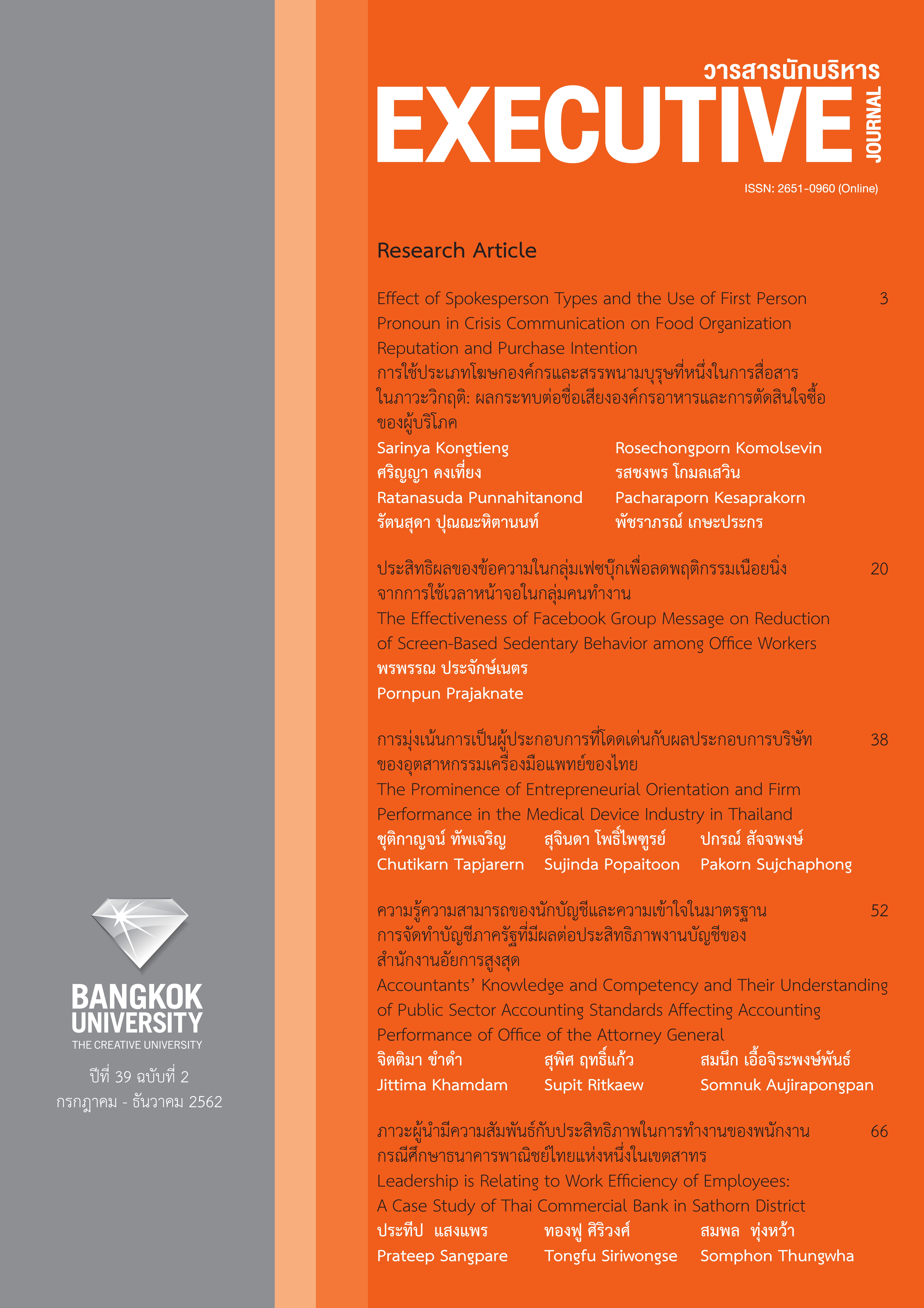Learning from the Past Bubbles and Bursts: Understanding Human Behaviors, Investment Risks and Opportunities for Sustainable Return
Main Article Content
Abstract
Knowledge and knowing our investment goal are keys to satisfactory outcomes when applied effectively. Though we tend to put blame on fate and misfortune, it is natural human behavior that tends to make bias and emotional decisions. As in the global financial crisis, it was the result of series of irrational behaviors and bias decisions made by market participants. This paper looks back in a few of financial histories, human behaviors and how process could be used to seize an investment opportunity, understand today trends, and stay on course of meeting investment plans. With financial markets around the world going through rapid and unprecedented changes, learning from past crisis would help us understand financial market today with more conscious mind and achieve sustainable investment returns.
Article Details
The manuscript submitted for publication must be the original version, submitted only to this particular journal with no prior acceptance for publication elsewhere in other academic journals. The manuscript must also not violate the copyright issue by means of plagiarism.
References
Acharya, V. V., & Schnabl, P. (2009). How banks played the leverage game. In V. V. Acharya, & M. Richardson (Eds.), Restoring Financial Stability: How to Repair a Broken System (pp. 83-100). Hoboken, NJ: John Wiley & Sons.
Bloomfield, R. (2010). Traditional versus behavioural finance. In H. K. Baker, & J. R. Nofsinger (Eds.), Behavioral Finance: Investors Corporations and Markets (pp. 23-38). Hoboken, NJ: John Wiley & Sons.
Bradshaw, M., Hutton A., Marcus A. J., & Tehranian H. (2010). Opacity, crash risk, and the option smirk curve (Working paper). Chestnut, MA: Boston College.
Callen, J., & Fang F. (2014). Short interest and stock price crash risk (Working paper). Toronto: Rotman School of Management.
Garraty, J. A. (1994). The American Nation: A history of the United States since 1865 (8th ed.). New York: HarperCollins College Publisher.
Chen, J., Hong H., & Stein J. C. (2001). Forecasting crashes: Trading volume, past returns, and conditional skewness in stock prices. Journal of Financial Economics, 61(3), 345-381.
Colombo, J. (2017). Historic stock market crashes, bubbles & financial crises. Retrieved July 14, 2019, http://www.thebubblebubble.com/historic-crashes/
Fama, E. (1970). Efficient capital markets: A review of theory and empirical work. The Journal of Finance, 25(2), 383-417.
Galbraith, J. K. (1993). A short history of financial euphoria. New York, NY: Penguin.
Galbraith, J. K. (1994). A short history of financial euphoria. New York, NY: Penguin.
Galbraith, J. K. (1997). The great crash 1929. New York: Houghton Mifflin.
Goetzmann, W. N., Kim, D., & Shiller, R. J. (2017). Crash beliefs from investor surveys (Working paper No. w22143). Cambridge, MA: National Bureau of Economic Research.
Gordon, J. S. (1999). The great game: The emergence of Wall Street as a world power 1653-2000. New York, NY: Scribner.
Graham, B. (2003). The intelligent investor, revised edition update with new commentary by Jason Zweig. New York: Harper Business Essentials.
Grinblatt, M., Titman, S., & Wermers, R. (1995). Momentum investment strategies, portfolio performance, and herding: A study of mutual fund behavior. The American Economic Review, 85(5), 1088-1105.
Guenthner, G. (2017). Here’s what happens after a huge rally. Retrieved July 15, 2019, https://dailyreckoning.com/heres-what-happens-after-a-huge-rally-3-must-see-charts/
Hannon, S. (2011). Trading psychology, the 14 stages of investor emotions. Retrieved June 14, 2019, https://www.stocktrader.com/2009/05/14/trading-psychology-stages-investor-emotions/
Holodny, E. (2017). Isaac Newton was a genius, but even he lost millions in the stock market. Retrieved July 15, 2019, https://www.businessinsider.sg/isaac-newton-lost-a-fortune-on-englands-hottest-stock-2016-1/
Hutton, A. P., Marcus A. J., & Tehranian, H. (2009). Opaque financial reports, R2 and crash risk. Journal of Financial Economics, 94, 67-86.
Janis, I. L. (1982). Groupthink (2nd ed.). Boston: Houghton Mifflin.
Kahneman, D., & Tversky, A. (1979). Prospect theory: An analysis of decision under risk. Econometrica, 47(2), 263-292.
Kindleberger, C. P., & Aliber, R. Z. (2000). Manias, panics, and crashes (4th ed.). New York: John Wiley & Sons.
Koesterich, R. (2015). Don’t let a financial crisis convince you to abandon diversification. Retrieved September 15, 2019, https://www.businessinsider.com/after-the-market-crisis-does-diversification-still-work-2015-5
Lakonishok, J., Shleifer, A., & Vishny, R. W. (1992). The impact of institutional trading on stock prices. Journal of Financial Economics, 32(1), 23-43.
Parikh, P. (2011). Value investing and behavioral finance. New Delhi: Tata Mcgraw Hill.
Pastor, L., & Veronesi P. (2012). Uncertainty about government policy and stock prices. The Journal of Finance, 67(4), 1219–1264.
Pastor, L., & Veronesi P. (2013) Political uncertainty and risk premia. The Journal of Financial Economics, 110(3), 520–545.
Shiller, R. J. (2000). Irrational exuberance. Princeton, NJ: Princeton University Press.
Siegel, J. J. (2002). Stock for the long run (3rd ed.). New York: McGraw-Hill.
Skinner, D., & Sloan, R. (2002). Earnings surprises, growth expectations, and stock returns or don’t let an earnings torpedo sink your portfolio. Review of Accounting Studies, 7(2), 289-312.
Thaler, R. (1999). Mental accounting matters. Journal of Behavioral Decision Making, 12(3), 183-206.
Tian, C. (2017). Invest like a guru, how to generate higher returns at reduced risk with value investing. Hoboken, NJ: John Wiley & Sons.
Uzar, C., & Akkaya, G. C. (2013). The mental and behavioural mistakes investors make. International Journal of Business and Management Studies, 5(1), 120-128.
Wermers, R. (1999). Mutual fund herding and the impact on stock prices. The Journal of Finance, 54(2), 581-622.


